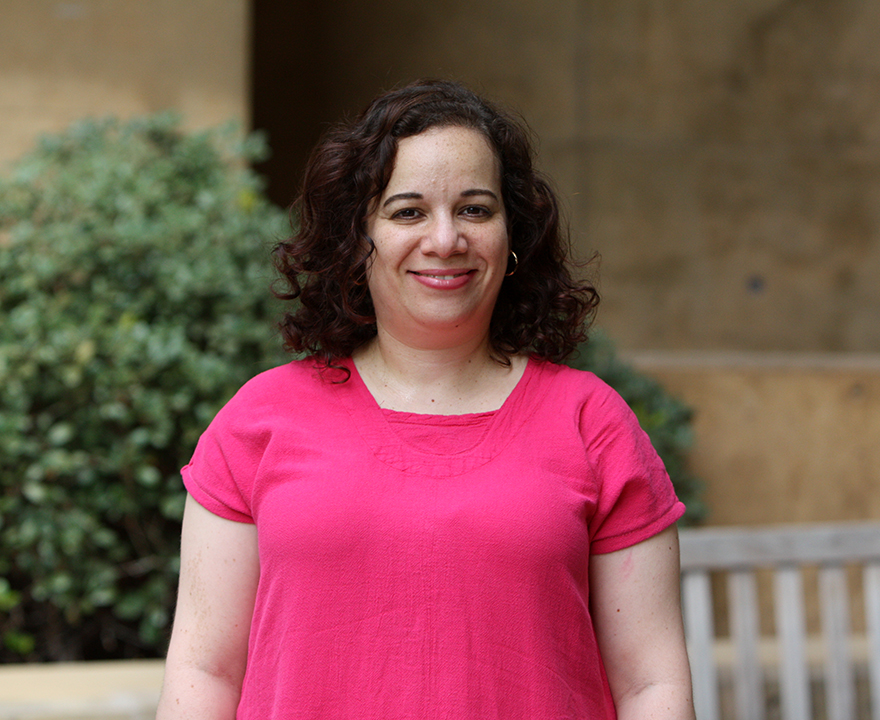Graphic novel’s comic book format ideal for complex subject

Graphic novel’s comic book format ideal for complex subject
- November 13, 2017
- UCI anthropologist intertwines story of religion and health through illustrations, creating new genre
 Move over, DC and Marvel – there’s a new comic in town. Lissa: A Story about Medical Promise, Friendship, and Revolution is a graphic novel (think: longer comic book) coauthored by UCI anthropologist Sherine
Hamdy that tells the story of two young women who meet as girls in Cairo.
Move over, DC and Marvel – there’s a new comic in town. Lissa: A Story about Medical Promise, Friendship, and Revolution is a graphic novel (think: longer comic book) coauthored by UCI anthropologist Sherine
Hamdy that tells the story of two young women who meet as girls in Cairo.
Through the unlikely friendship that develops between the two characters, crossing class, religious, and cultural differences, Lissa tells the intertwined stories of family illness and loss as experienced by the two main characters. As the two women grapple with their differences, the Egyptian revolution breaks out, changing their friendship and lives forever.
“People often think of comics as ‘dumbing down,’” says Hamdy. “And, yes, some people do use comics to that effect, but we were inspired by all the possibilities opened up by juxtaposing image and text – comics can bring more complexity to a situation by letting us play with time, scale, and geography– with comics, we could also depict interior emotional states that would be difficult to convey through words alone, like pain, meditation, or solitude.”
The work integrates Hamdy’s Egypt-based research on organ transplantation and failure, Muslim religious scholars’ views on what can and can’t be done to the body, and questions of health and inequality that get at why people in certain geographic regions are at higher risk for organ failure to begin with. Coleman Nye of Simon Fraser University, Lissa’s coauthor, researches women in the U.S. who are at genetic risk for ovarian or breast cancer.
Together the two scholars created fictional characters based on hundreds of interviews that they carried out in their work. Hamdy and Nye sought this collaboration when they realized how their two different ethnographic sites bring to the fore common themes about the individualization of patient suffering – which nonetheless only occurs through social bonds – and the commodification of human bodies and health care. They also wanted to break down the idea of incommensurable problems in the “West” vs. “the Rest” while still drawing attention to the discrepancy in resources throughout the world.
“Crafting a work of ‘ethnofiction’ allowed us to bring our two sites together through the story of two girls from different worlds,” says Coleman Nye. “Like with ethnographic film, comics visually captures unfamiliar settings and events. But unlike with film, comics readers can take in the panels at their own pace, and can hand the booklets from person to person without requiring particular technologies to store or screen or view the story.”
Available this week, advance copies of the book have already made a splash. Egyptian Revolutionary Graffiti artist who goes by the name Ganzeer writes on his blog: “It’s a book about hope and sacrifice… Such a complex work that somehow ends up becoming nothing less of a piercing examination of life itself in the 21st century.”
The book is University of Toronto Press’s first leap into the graphic novel genre, and it launches the new ethnoGRAPHIC series that Hamdy will be editing. The project is exciting for the experimental ethnographer who joined the UCI faculty in fall 2017.
“UCI’s Department of Anthropology is widely considered the place to be for cutting edge experimental ethnography,” she says. “Professors and publicists alike are always looking for new ways to make academic research more accessible to wider audiences. Comics built on careful scientific research can really take off here and help us get more academic work into the public sphere.”
-Heather Ashbach, UCI School of Social Sciences
-featured: Lissa cover art. Headshot: Sherine Hamdy, UCI.
Share on:


connect with us: